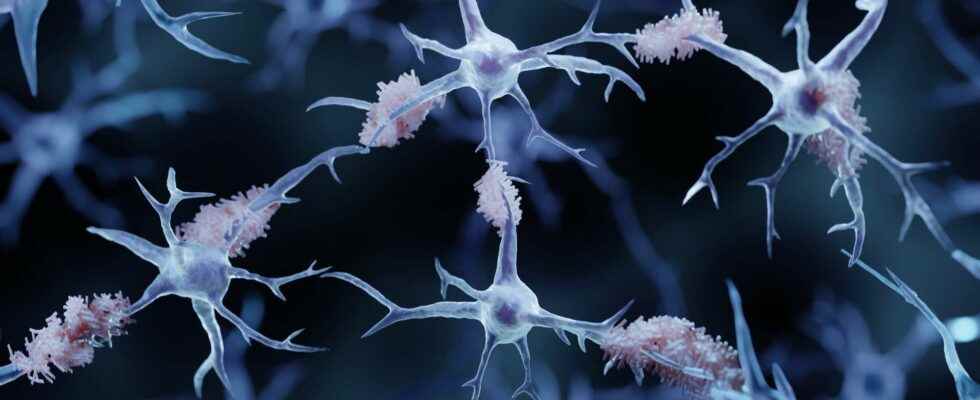Although we do not know how to treat Alzheimer’s disease, researchers have tested a new way to slow its progression: blood transfusions. According to them, they would prevent the aggregation of beta-amyloid peptides, which are partly responsible for the damage created in the brain.
Main form of dementia in the world, the Alzheimer’s disease is a neurodegenerative disease, for which there is no cure. Caused by the accumulation of abnormal protein aggregates in the brain, it evolves slowly, over years, but always ends up causing the death of the affected person. More specifically, these are the Tau proteins and the peptides amyloid beta who are responsible: beta-amyloids accumulate and form amyloid plaques on the outside of the neurons and then block interneuronal communication. The Tau proteins, for their part, are found deformed, entangled and present in large quantities at the level of the destroyed neurons.
There are around 50 million cases worldwide, and nearly a million in France, with the majority of people over 65. Very often, the disease is detected too late. When the first symptoms appear, such as memory loss, language disorders, mood disorders, or disorientation… the brain is already damaged. Although there is no specific treatment to stop or even slow the disease, researchers have studied a way to prevent the aggregation of beta-amyloid proteins and their cerebral deposition. Their technique, detailed in a publication of the journal Nature – Molecular Psychiatryis based on a blood exchange, i.e. a large number of transfusions blood.
Development of amyloid plaques reduced by 40-80% in mice
Currently, the treatments tested do not work, mainly for one reason according to the researchers: molecules treatments are stopped by the blood-brain barrier, which isolates the brain from the bloodstream and serves as a filter. So, rather than trying to eliminate the amyloid plaques already present in the brain, the researchers focused on prevention aggregation of peptides into plaques. Their idea: bring “new” blood to mice with the disease, and observe the development of amyloid plaques.
Their idea: bring “new” blood to mice with the disease, and observe the development of amyloid plaques
“Blood vessels in the brain are classically considered the body’s most impermeable barrier.said Akihiko Urayama, first author of the study and researcher at Mitchell Center for Alzheimer’s Disease in Houston. We realized that the barrier is at the same time a very specialized interface between the brain and the systemic circulation”.
They injected sick mice “normal blood from wild-type mice with the same genetic background”, while taking it from them in order to carry out a real blood exchange. After numerous blood transfusions, they found a reduction in the development of amyloid plaques by 40-80% and a decrease in their growth rate over time, in addition to an improvement in the performance of the spatial memory in older mice.
As they explain, “the exact mechanism by which blood exchange reduces amyloid pathology and improves memory is currently unknown”. However, they assume that a decrease in beta-amyloids in the blood would then redistribute those contained in the brain to the blood. This marks all the same, according to the researchers, a new hope in the treatments.
Interested in what you just read?
